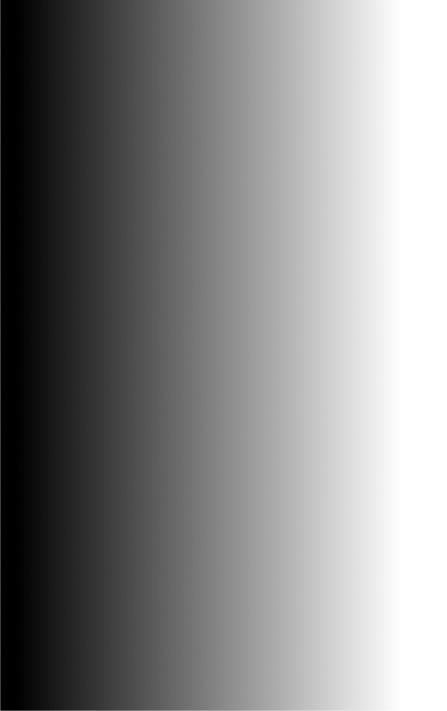Oregon Window Tint Law: What Drivers Need to Know Before Tinting in 2025
Oregon Window Tint Law: What Drivers Need to Know Before Tinting in 2025
Window tinting offers more than just aesthetics; it protects passengers, improves comfort, and reduces glare. For Oregon residents, where weather conditions and visibility shift rapidly from coast to mountains to city streets, tint can be a wise investment.
But Oregon has firm rules about how dark or reflective your tint can be. If you’re not careful, even an honest mistake can lead to legal trouble or the cost of reinstalling. That’s why understanding Oregon window tint law before visiting a shop or installing it yourself is essential.
TERMINAX provides premium tint films designed to follow state law while offering industry-leading performance. In this guide, we’ll explore Oregon’s current tint laws, the risks of non-compliance, and how TERMINAX ensures your tinting experience is safe, legal, and long-lasting.
Why Window Tint Law Matters in Oregon
Oregon’s Department of Transportation enforces window tinting regulations as a matter of road safety. Police officers must be able to see into vehicles during stops, and drivers need adequate visibility to react to road hazards, especially in wet or foggy conditions common in the region.
But for most car owners, the motivation to get a tint goes beyond appearance. Here’s what prompts Oregon drivers to apply tint:
- Comfort during long commutes
- Increased privacy in urban areas like Portland or Eugene
- Protection from harmful UV rays even on overcast days
- Improved focus while driving in snowy or rainy glare
The challenge is getting the right film, installed correctly, and compliant with state limits, which vary by window and vehicle type.
A Closer Look: Oregon’s Window Tint Law (2025 Update)
Oregon law defines how dark or reflective your tint can be using a standard called Visible Light Transmission (VLT). This measures how much light passes through both the window and the film. The lower the VLT percentage, the darker the tint.
Here’s a breakdown of the legal requirements:
For Passenger Cars (Sedans):
- Windshield: Tint is only allowed on the top 6 inches and must be non-reflective.
- Front Side Windows: Must allow at least 35% of light in (35% VLT).
- Rear Side Windows: Also, must be 35% VLT or greater.
- Rear Window: Requires a minimum of 35% VLT as well.
For SUVs, Vans, and Trucks:
- Windshield: Top 6 inches can be tinted with non-reflective film.
- Front Side Windows: Also, must meet the 35% VLT minimum.
- Rear Side Windows and Rear Window: No restrictions, can be darker than 35%.
This distinction makes it legal for SUVs and vans to have more privacy in the back, while keeping the front visible for law enforcement and safe driving.
Oregon Tint Rules Go Beyond Darkness
It’s not just about how dark your tint is. Oregon law also addresses the reflectivity and color of the film:
- Reflective films may reflect no more than 13% of light
- Tints cannot be red, amber, or yellow
These restrictions help maintain safe visibility and prevent confusion with emergency vehicles.
Common Mistakes Oregon Drivers Make with Tint
Despite the regulations being publicly available, violations are common. Here are the most frequent mistakes:
Tinting the Whole Windshield
It’s easy to assume that more tint equals more protection, but tinting the full windshield (below the top 6 inches) is illegal and can cause visibility issues.
Choosing the Wrong Film Shade
Online purchases or DIY kits often come with a tint that is too dark. Films with a VLT below 35% on front-side windows are illegal in Oregon for nearly all vehicle types.
Skipping the Certification Sticker
Oregon law requires a compliance label placed between the glass and film on the driver’s side window. Many tint shops overlook this, especially if they’re not familiar with Oregon-specific regulations.
Ignoring Reflectivity Rules
High-reflective or mirrored films that look metallic may seem stylish, but often exceed Oregon’s 13% reflectivity limit.
Assuming One State’s Law Applies Everywhere
Some drivers install tint in other states, then move or travel to Oregon. Just because a tint is legal in California or Nevada doesn’t mean it will pass Oregon inspection.
The Role of Professional Installation
To remain compliant, the film itself must meet standards, but so must the installation process. Certified installers trained in Oregon regulations are essential. They will:
- Measure VLT levels accurately
- Apply only legally approved films
- Add certification stickers as required
- Explain what each tint zone (windshield, front, rear) allows
- Help drivers avoid legal risk
TERMINAX partners exclusively with installers trained to deliver high-compliance work that doesn’t compromise on appearance or performance.
Why Oregon’s Environment Demands Smart Tint Choices
Oregon drivers face some unique conditions. Between rainy coastlines, snow-covered mountain passes, and bright but cold high-desert sunlight, visual clarity and protection matter.
TERMINAX films are designed with these challenges in mind:
- Rain-resistant coating that prevents hazing and visibility reduction
- UV-blocking layers that function even under cloud cover
- Infrared rejection to keep interiors cool when the sun does break through
- Durable adhesives that won’t bubble or peel during cold winters or wet weather
Oregon and Medical Tint Exemptions
If you have a condition like skin cancer, lupus, or a diagnosed light sensitivity, you may be eligible for a medical exemption to install darker-than-legal tint.
Here’s how to qualify:
- Obtain a letter from a licensed physician describing the condition.
- Submit the exemption request to the Oregon DMV.
- Once approved, keep the exemption documentation in your vehicle.
Even with a medical exemption, your tint must still meet reflectivity and certification rules.
Why TERMINAX Is Oregon’s Reliable Tint Brand
TERMINAX develops tint films that meet Oregon standards while delivering cutting-edge benefits. It’s a trusted choice for drivers who want protection without worrying about enforcement issues or future inspection failures.
Oregon-Compliant VLT Choices
TERMINAX offers 35% and higher VLT films designed for legal use on regulated windows. For SUVs or medical exemptions, darker options are also available.
Low Reflectivity Formula
All TERMINAX films remain under Oregon’s 13% reflectivity limit, preventing the “mirrored” look that can attract tickets.
Installation Includes Certification Labels
TERMINAX-approved technicians apply required labels on the driver’s side glass, so your tint meets full compliance, visually and legally.
Made to Last in Pacific Northwest Weather
With resistance to cold, rain, road grime, and rapid temperature swings, TERMINAX films hold up season after season.
What to Ask Before Tinting Your Vehicle in Oregon
Before your appointment or film purchase, ask these key questions:
- Is this film certified for use in Oregon?
- What is the VLT of this specific tint?
- Will I receive a certification label after installation?
- Does this film comply with the 13% reflectivity limit?
- What are my options for SUVs or rear window tinting?
- If I qualify for a medical exemption, do you offer suitable films?
TERMINAX-certified dealers are trained to answer all of these confidently and accurately.
Final Thoughts
Window tinting offers real advantages in Oregon, but only when it’s done correctly. Misunderstanding the law or using the wrong product can lead to fines, failed inspections, or reduced visibility. By choosing a reliable brand like TERMINAX and working with installers who understand state laws, you get the full benefit of window tint, without the risk.
From legal compliance to year-round performance in Oregon’s diverse climates, TERMINAX delivers window tint solutions that protect, enhance, and respect the law.



